#Anna Komnene
Text
Anna Komnene, Princess and Historian
Anna Komnene is one of our only sources on the First Crusade from the Byzantine perspective. She was a Byzantine princess, historian, and intellectual. Read more about her life here! #history #crusades #womenshistory #AnnaKomnene #historian #writer
“For even the greatest of deeds, if not haply preserved in written words and handed down to remembrance, become extinguished in the obscurity of silence”
-Preface, The Alexiad
Anna Komnene is one of the first female historians and one of the most valuable primary sources of the Middle Ages. Her written account of her father’s reign, The Alexiad, is our only source of the First Crusade from a…
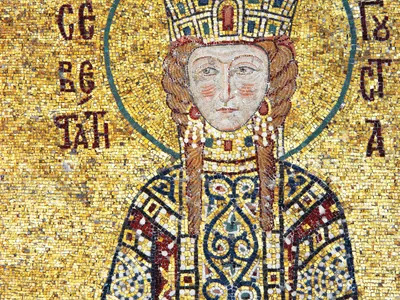
View On WordPress
#11th century#Alexiad#Alexios I#Anna Komnene#biography#blog#Byzantine#Byzantine Empire#classics#crusades#first crusade#Greek#Greek classics#Greek history#historian#history#history blog#history writing#Homer#Iliad#medieval history#princess#women&039;s history
84 notes
·
View notes
Note
What was women's position in the Byzantine Empire? I haven't searched that much, but it seems like her position wasn't any different from Ancient Greece, where they were expected to be modest, silent and it was generally preferable not to be heard (at least, women from aristocratic families).
Well you won’t find easily a medieval state which did not want women to be modest and quiet.
In spite of that, no that’s not true. The place of the woman in the society improved considerably in Byzantine times compared to the Classical era. As a sidenote, perhaps we should not generalize about Classical Greece either, especially when we apply the reality of Athens to all the Greek world without enough evidence that this is historically accurate, at a time when Athens was extremely obsessed with ¨male perfection¨.
Based on our view of things nowadays, it might seem counterintuitive, however Christianity played a huge role in this improvement. You see, the Bible through its scriptures and also the very example of Virgin Mary, whom the Byzantines (and later the Modern Greeks too) worshipped almost equally to Christ, as well as the church’s acknowledgement and veneration of women martyrs indiscriminately from men martyrs, made it clear that women were spiritually equally capable of achieving “théosis”, meaning resemble the image of God, in other words; sainthood. It was thus deemed important that women would be able to read and study the scriptures. As a result the Byzantine empire had the highest literacy rate of women in the Middle Ages.
Intercepting for those who might wonder: "But the Ancient Greek religion had gods and goddesses alike, so why wouldn't that improve the social status of women?". The answer is because in the Ancient Greek religion there was no concept of théosis, meaning any human's strive to achieve a moral perfection to resemble the image of God. The dynamics of gods and godesses were separate from those of the people, where women were left to be evaluated by and versus men alone.
Women were nowhere as confined as the women of classical Greece. Of course they should be good wives and mothers catering to their household first and foremost but they could participate in social events, festivals, go shopping, lather in the baths and have fun like men did. As wives, their status was also better, as according to Christianity all god-fearing men were supposed to be loyal to their wives and have no concubines. So, if a man really had no intention to be faithful at all, neither to his wife nor to the Christian teachings, he at least did it discreetly, and if he did not do even that, then he did not escape the judgement of the society. Divorce was hard for either spouse to ask, of course waaay more for women, but for example Justinian enforced an iconic law that if a couple wanted to take a divorce then BOTH spouses should go to monasteries and be celibate for life lol So you know, be cruel, but at least be indiscriminately cruel! 😂
Financially, dowries and inheritance remained a woman’s property after marriage unlike in classical times. If the husband died, it was the widow’s choice whether she would marry again or not and she was in charge of her children on her own whereas in classical times women had to marry their husband’s closest relative (to “protect” them and the property that had now passed on their own family). So, really no contest there. Women owned and ran businesses and signed contracts. They were employed in a wide range of professions.
As for the aristocrats, they had it much better than classical aristocrats. They did not work like lower class women, obviously, so they filled all that extra time by being pampered by their servants (female and male, sometimes eunuchs), who were usually exclusive to them. Depending on the lady’s interests, the servants would keep her entertained by playing music, reading to her, gossiping, grooming her etc Some women hired teachers to improve on their education on their own accord. Wives of important men were usually involved in political and diplomatic affairs and they were very interested in such matters. Educated women could be doctors (for women).
Nuns, who did not have the burden of taking care of the children and a husband, often became studious and pretty educated, with artistic concerns, like Kassiani. And to go back to the ask, there are accounts of Byzantine princesses being perceived in West Europe as “too talkative” and “too concerned with themselves”, so apparently Byzantium gave its aristocratic women a lot more liberty than, say, Classical Athens and also more than Western Europe did.
And then of course the Byzantine Empire was the only medieval state to have ever been reigned by four women on their own, and some of them were very consciously and ambitiously pursuing the throne. But even the empresses consorts, meaning the wives of the emperors, were also expected to be well acquainted with all the matters of the empire in case something happened to the emperor because they had to stand in his place temporarily or even serve as regents. From the 22 pages in Wikipedia about Byzantine regents, the 7 are about women, so one third, at least from the well known ones.
Women were also interested in their appearances and really took matters in their hands. Rich women would have special gardens cultivating flowers and spices to create their own perfumes. Michael Psellos writes about how Empress Zoe had essentially turned herself into a chemist, making the basements of the imperial palace a lab for perfumes and elixirs to maintain her youthful appearance.
And let’s end this with some quotes from Anna Komnene’s Alexiad (inspired by the Iliad she so loved), the chronicles of her father’s Emperor Alexius exploits in war.

12th-century manuscript of the Alexiad
The Alexiad is invaluable because it remains one of the richest sources of information historians possess about the military, social and imperial history of the Byzantine Empire.
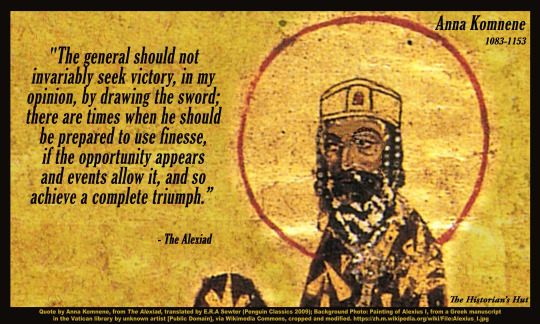




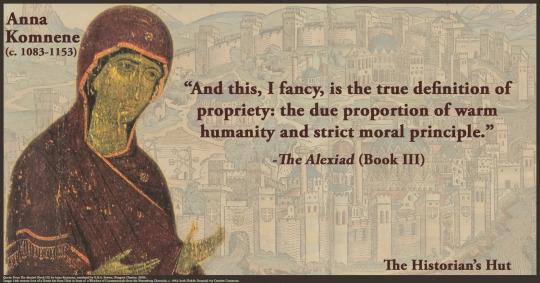

Ah I had written before about that stuff and I meant to write something short this time but I just can’t do it when it’s about Byzantium my love adefefajdhhajhf
#history#byzantine empire#eastern roman empire#women#byzantine history#byzantine culture#east roman empire#byzantine greek culture#greek history#greek culture#middle ages#women in history#anna komnene#anna komnene porphyrogennite#anna comnena#attichoney4u#ask#long post#tw long
70 notes
·
View notes
Text
There is something very special to me about the Alexiad.
8 notes
·
View notes
Text
The Alexiad by Anna Komnene
The Alexiad is a medieval historical and biographical work written by Anna Komnene (1083-1153), a Byzantine princess and historian. Anna Komnene was the daughter of Emperor Alexios I Komnenos: while Alexious I wasn't the first ruler in the Komnenian dynasty, the Komnenos family rose to power during his reign. In the Alexiad, Anna Komnene provides a eulogistic biography of her father's reign during 1081-1118; the literary work was completed around 1148. It was written in Attic Greek (classical Greek).

13th century Byzantine mosaic of John Komnenos, brother of Anna Komnene in the Hagia Sophia, Istanbul. Empress Eirene is depicted holding a parchment scroll; her blonde hair is noticeable.
Composed of a prologue and fifteen books, Anna Komnene also provides a vivid account of the political and military events of her time, including the tumultuous First Crusade that moved eastward, and the Byzantine Empire's interactions with various foreign powers. Anna Komnene's account of the First Crusade was primarily presented in Books 10 and 11. The narrative extends beyond that of a historical chronicle of its time. Anna Komnene engages with classical rhetoric and presents the Byzantine Empire under Alexios I as a great, powerful, and righteous ruler: under his rule, the Byzantine empire successfully defeated -- or at least neutralized -- many of their enemies, one of them being the Crusaders or "Frankish Barbarians." During the 12th century, the Byzantine Empire faced many adversaries' invasion. The Sack of Thessalonica (1185), though it occurred after the rule of Alexios I, was among one of the most destructive blows contributing to the ultimate fall of the Byzantine Empire. Two decades earlier, Thessaolnica was captured and sacked by the Abbasid Caliphate.
Themes:
The Alexiad addresses themes of religious conflict, barbarism, kingship, and the categorizing of different Crusader groups. In the chronicle, she mentions the Celts, Latins, Normans, and Frankish Barbarians. It can also be argued that some elements of Greek mythology, such as that drawing upon Homer's Iliad, were subtly laced into the Alexiad. In Lamentation, History, and Female Authorship in Anna Komnene's Alexiad, Leonora Neville writes "the characterization of Alexios as wily sea captain steering the empire through constant storms with guile and courage strongly recalls Odysseus (Neville, 192)." While this project aims to discuss the themes of martyrdom and barbarism in both the Alexiad and the Song of Roland, it is worth considering the themes in a multifaceted way through different mediums. Her position as an "insider" to the Court and an "outsider" female observer in a male-dominated political sphere also invokes the classic class discussion of binaries, or of "us" and "them."
Some thoughts on Anna Komnene's historigraphy:
Anna Komnene's position as a female writer in 12th century makes the Alexiad a unique piece of literature: her perspective was influenced by her own experiences as both an "insider" to the Court and an "outsider" observing the political landscape of Byzantium during her lifetime. Her work deviates from the historiography commonly found during her time: she describes herself as the author, and does not withhold from expressing her feelings. While many historians attribute this to Anna Komnene being a female writer, other have also speculated whether Anna Komnene was merely working on her husband's notes -- nevertheless, many modern historians now agree that Anna Komnene was the original author of the Alexiad.
Aside from her emotionality, historian Peter Frankopan commented on her emphasis on her father as a Christian emperor that Anna Komnene's historiography reflected a hagiographical tradition.
What I find a little curious about the Alexiad while examining it against the context of other works produced during its time is how -- despite addressing many religious themes and conflicts, and venerating Alexios I as a Christian ruler, the Alexaid makes no mention of the East-West Schism of 1054. While this is also another "binary" that we can explore, the divide of the Orthodox versus Roman Catholic Church was a crucial part not only of Byzantine history at the time, but heavily defined the politics and interactions of the Byzantine Empire with other Empires.
Class sources:
Neville reading
The Alexiad
...and Peter Frankopan, if you would allow me to go to HIST55 for a bit!
External sources:
0 notes
Text
Geoffrey of Monmouth is so funny. He's a proud Briton, and that comes through in his portrayal of the Anglo-Saxons. But the Anglo-Saxons get to be cool villians, they're cruel and cunning, but can be brave and do sometimes win battles.
This is in stark contrast to the Romans. I don't think he ever lets the Romans win a battle over the Britons. They show up in Britain, immediately get absolutely slaughtered and then somehow end up in control over the island anyway with no explanation. This happens about three or four times.
I cannot get over how funny this is. He was around in the 12th century. The Roman empire still existed then, but post Manzikert they were hardly doing much to threaten Wales. Where the hell did he get this hatred from?
#geoffrey of monmouth#History of the kings of britain#He's so funny#Literally thinks about rome everyday and seethes#RIP geoffrey you would have loved the fourth crusade#Or mehmed the conqueror#I want to put him in a room with anna komnene
3 notes
·
View notes
Text
yeah, yeah, a niche historical event that not one member of the general population could name, we've all seen it
#🗡️#history woes#you know anna komnene right? right???#then you get into 'do you know who henry viii is' vs 'have you heard of the leader of the pilgrimage of grace'
1 note
·
View note
Note
In canon, I’m sure Armin will write down all their story from the fall of Wall Maria up until Eren’s death, and it will be one of the great classics in-universe. That, and maybe even Mikasa will pull an Anna Komnene and write the Ereniad (obscure reference, but it means telling his story in an impartial way while showing he wasn’t the complete monster some people will make him out to be)
I looked Anna Komnene up and skimmed her Wikipedia page just now. What an interesting woman!
More than writing a history, I can see Mikasa keeping a journal where she writes down all of her memories of Eren, but I don't see her publishing it because she's so private. I think maybe one of her grandchildren would find it in her things after her death and realize the significance. Whether they share it with the world depends on the kind of person the grandchild is, I suppose.
I am absolutely certain Armin would write a book, though, and it would be exceedingly comprehensive.
#ask me things#my asks#answered asks#eremika#eren jaeger#mikasa ackerman#attack on titan#armin arlert#aot
14 notes
·
View notes
Text
Wives and Daughters of Byzantine Emperors: Ages at First Marriage
I have only included women whose birth dates and dates of marriage are known within at least 1-2 years, therefore, this is not a comprehensive list.
Theodora, wife of Justinian I; age 35 when she married Justinian in 435 AD
Constantina, wife of Maurice; age 22 when she married Maurice in 582 AD
Eudokia, wife of Heraclius; age 30 when she married Heraclius in 610 AD
Fausta, wife of Constans II; age 12 when she married Constans in 642 AD
Maria of Amnia, wife of Constantine VI; age 18 when she married Constantine in 788 AD
Theodote, wife of Constantine VI; age 15 when she married Constantine in 795 AD
Euphrosyne, wife of Michael II; age 33 when she married Michael in 823 AD
Theodora, wife of Theophilos; age 15 when she married Theophilos in 830 AD
Eudokia Dekapolitissa, wife of Michael III; age 15 when she married Michael in 855 AD
Eudokia Ingerina, wife of Basil I; age 25 when she married Basil in 865 CE
Theophano Martinakia, wife of Leo VI; age 16/17 when she married Leo in 882/883 AD
Helena Lekapene, wife of Constantine VII; age 9 when she married Constantine in 919 AD
Theodora, wife of John I Tzimiskes; age 25 when she married John in 971 AD
Theophano, wife of Romanos II (and later Nikephoros II); age 14 when she married Romanos in 955 AD
Anna Porphyrogenita, daughter of Romanos II; age 27 when she married Vladimir in 990 AD
Zoe Porphyrogenita, wife of Romanos III (and later Michael IV & Constantine IX); age 50 when she married Romanos in 1028 AD
Eudokia Makrembolitissa, wife of Constantine X Doukas (and later Romanos IV Diogenes); age 19 when she married Constantine in 1049 AD
Maria of Alania, wife of Michael II Doukas (and later Nikephoros III Botaniates); age 12 when she married Michael in 1065 AD
Irene Doukaina, wife of Alexios I Komnenos; age 11 when she married Alexios in 1078 AD
Anna Komnene, wife of Nikephoros Bryennios the Younger; age 14 when she married Nikephoros in 1097 AD
Maria Komnene, daughter of Alexios I Komnenos; age 14/15 when she married Nikephoros Katakalon in 1099/1100 AD
Eudokia Komnene, daughter of Alexios Komnenos; age 15 when she married Michael Iasites in 1109 AD
Theodora Komnene, daughter of Alexios Komnenos; age 15 when she married Constantine Kourtikes in 1111 AD
Maria of Antioch, wife of Manuel I Komnenos; age 16 when she married Manuel in 1161 AD
Euphrosyne Doukaina Kamatera, wife of Alexios III Angelos; age 14 when she married Alexios in 1169 AD
Maria Komnene, daughter of Manuel I Komnenos; age 27 when she married Renier of Montferrat in 1179 AD
Anna of France, wife of Alexios II Komnenos (and later Andronikos Komnenos); age 9 when she married Alexios in 1180 AD
Eudokia Angelina, daughter of Alexios III Angelos; age 13 when she married Stefan Nemanjic in 1186 AD
Margaret of Hungary, wife of Isaac II Angelos; age 11 when she married Isaac in 1186 AD
Anna Komnene Angelina, daughter of Alexios III Angelos; age 14 when she married Isaac Komnenos Vatatzes in 1190 AD
Irene Angelina, daughter of Isaac II Angelos; age 16 when she married Philip of Swabia in 1197 AD
Philippa of Armenia, wife of Theodore I Laskaris; age 31 when she married Theodore in 1214 AD
Maria of Courtenay, wife of Theodore I Laskaris; age 15 when she married Theodore in 1219 AD
Maria Laskarina, daughter of Theodore I Laskaris; age 12 when she married Bela IV of Hungary in 1218 AD
Elena Asenina of Bulgaria, wife of Theodore II Laskaris; age 11 when she married Theodore in 1235 AD
Anna of Hohenstaufen, wife of John III Doukas Vatatzes; age 14 when she married John in 1244 AD
Theodora Palaiologina, wife of Michael VIII Palaiologos; age 13 when she married Michael in 1253 AD
Anna of Hungary, wife of Andronikos II Palaiologos; age 13 when she married Andronikos in 1273 AD
Eudokia Palaiologina, daughter of Michael VIII Palaiologos; age 17 when she married John II Megas Komnenos in 1282 AD
Irene of Montferrat, wife of Andronikos II Palaiologos; age 10 when she married Andronikos in 1284 AD
Rita of Armenia, wife of Michael IX Palaiologos; age 16 when she married Michael in 1294 AD
Simonis Palaiologos, daughter of Andronikos II Palaiologos; age 5 when she married Stefan Milutin in 1299 AD
Irene of Brunswick, wife of Andronikos III Palaiologos; age 25 when she married Andronikos in 1318 AD
Anna of Savoy, wife of Andronikos III Palaiologos; age 20 when she married Andronikos in 1326 AD
Irene Palaiologina, daughter of Andronikos III Palaiologos; age 20 when she married Basil of Trebizond in 1335 AD
Maria-Irene Palaiologina, daughter of Andronikos III Palaiologos; age 9 when she married Michael Asen IV of Bulgaria in 1336 AD
Theodora Kantakouzene, daughter of John VI Palaiologos; age 16 when she married Orhan Gazi in 1346 AD
Helena Kantakouzene, wife of John V Palaiologos; age 13 when she married John in 1347 AD
Keratsa of Bulgaria, wife of Andronikos IV Palaiologos; age 14 when she married Andronikos in 1362 AD
Helena Dragas, wife of Manuel II Palaiologos; age 20 when she married Manuel in 1392 AD
Anna of Moscow, wife of John VIII Palaiologos; age 21 when she married John in 1414 AD
Maria Komnene, wife of John VIII Palaiologos; age 23 when she married John in 1427 AD
Helena Palaiologina, daughter of Theodore II Palaiologos; age 14 when she married John II of Cyprus in 1442 AD
Helena Palaiologina, daughter of Thomas Palaiologos; age 15 when she married Lazar Brankovic in 1446 AD
Sophia Palaiologina, daughter of Thomas Palaiologos; age 23 when she married Ivan III of Russia in 1472 AD
The average age at first marriage was 17 years old.
6 notes
·
View notes
Text
Byzantine princess Anna Komnene was banished to a convent for trying to kill her brother, but kept herself busy becoming Europe's first female historian.
104 notes
·
View notes
Note
Which Byzantine figures do you consider underrated? As someone who has slowly started to learn more about Byzantium, names like Constantine the Great, Justinian the Great, Theodora, Irene of Athens, Anne Komnene, Nikephoros Phokas, Constantine Palaiologos, Tsimiski, Basil, Zoe and Theodora Porprhyrogennita and Theophano are familiar, but do you have any other recommendations (sorry if I misspelled some)?
Below are a few Byzantine historical figures I find very interesting currently:

Flavius Belisarius (c.500 - 565)
While Justinian the Great is one of the most significant emperors in history, his accomplishments would simply not be the same, if he did not have Belisarius as his military commander. He was of uncertain descent (possibly Thracian, Illyrian or less so Greek) but his mother tongue was certainly Latin. Belisarius reconquered Rome and Italy while severely outnumbered during the Gothic War, defeated the Sassanids in the Iberian War, conquered the Vandal Kingdom in North Africa, successfully repulsed the Huns and defended the empire from the Persians and the Arabs. The Byzantine Empire reached its largest surface mostly thanks to Belisarius. A more controversial point in his life was when he was commanded to suppress the notorious Nika riots against Justinian, which ended in a massacre of dozens of thousands civillians. Belisarius was above all a strategist; he didn't mind fleeing the battle or using trickery in order to win a war. Despite his analytical mind in battle, he resolutely wasn't one in the affairs of the palace. Belisarius was married and quite smitten with Antonina, who had the favour of Empress Theodora, and thus felt safe to be totally unhinged. Schemes happening in the palace would sometimes find a scapegoat in Belisarius, who was likely the most genuinely devoted person to the emperor. As a result, Belisarius was often not treated well by the emperor and the secretaries and he was cheated on by his wife. He was even led to trial for betrayal, although Justinian eventually pardoned him. According to legend, Justinian first blinded him and then pardoned him, although lately the historicity of this is questioned. What's certain is that Belisarius didn't receive the respect he deserved in his personal life but he earned the respect of the historians, who consider him one of the best military leaders in history.
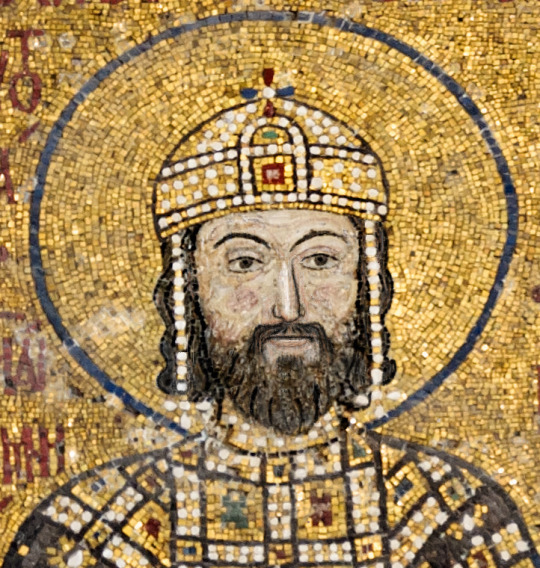
Ioannis II Komnenos (1087 - 1143)
Known as Kaloioannis (John the Good / Beautiful), Ioannis is considered the best emperor from the Greek dynasty of the Komneni. Ioannis was not beautiful, he must have been rather unattractive actually, but he earned the title because of his noble character. He was the brother of Anna Komnene, he was the one she tried to poison so that she would ascend to the throne instead. Ioannis forgave her. Ioannis was very just, modest and pious and would only use his imperial luxuries during diplomat visits. He was married to Irene of Hungary. Whether it was because of his piety, his natural predesposition or a different orientation, Ioannis was not very interested in the joys of marriage. However, he remained devoted and faithful to her. It is notable that during his long reign, not a single person was sentenced to death or mutilation, at a time that this would have been the norm for criminals and traitors. Despite all that, Ioannis was actually a great military leader once need arose. His biggest goal as an emperor was to undo the damage from the Battle of Manzikert 50 years prior. Indeed he forced Seljuk Turks to assume a defensive stance and did expand the empire's power to the east again. The Byzantine population increased during his reign. It is certain that Ioannis left the empire significantly better than how he received it. Some sources suggest that Ioannis' noble character was an inspiration to the people of his empire.

Michael Psellos (1017 - 1078)
Psellos was a Greek man of great knowledge and intellect and a questionable character. He did it all; he was a monk, a writer, a philosopher, a judge, a music theorist, an imperial advisor and courtier and a historian. His skill in literally everything led him quickly to the position of the leading professor in the University of Constantinople and that of secretary in the imperial court. His political influence was immense and he saw many emperors succeed each other while he maintained his position as political advisor. Because a big part of his work is autobiographical, it is unclear whether some of his claims are entirely reliable; Psellos was prone to vanity and sarcasm against those who did not favour him. Psellos studied Plato thoroughly, so much so that at times his faith in Christian Orthodoxy was questioned. *Fun fact: Psellos was apparently good at everything except Latin. His Latin was so rusty he confused Cicero with Caesar!
He looks like a Greek Rasputin in his painting above lol Anyway, he was manipulative but he wasn't nowhere near as controversial as Rasputin, let me be clear.
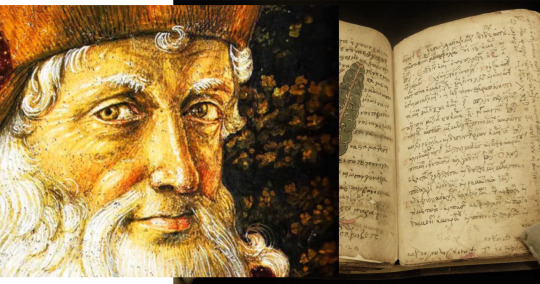
Georgios Gemistos Plethon (c. 1355 - 1452/1454)
Gemistos Plethon was a scholar and philosopher of the late Byzantine era. He was the pioneer of the revival of Greek scholarship in Western Europe. He was secretly not Christian, he believed in the Ancient Greek gods. Plethon admired Platon too. (It's Platon in Greek.) So much so that he added "Plethon" next to his surname Gemistos, which means pretty much the same thing (full) except more archaic and more similar to Plato(n)'s name! He was imperial advisor to the Palaeologi dynasty who at the time were reigning from Mystras, as the empire was dissolving. Everyone suspected his pagan beliefs but he was so influential and important that nobody dared confront him about it. He taught philosophy, astronomy, history, geography and classical literature. He was invited to Florence, Italy to teach Plato and Aristotle and help Florentines understand the differences between the two philosophies. Plethon died in Mystras shortly before or after the Fall of Constantinople. We don't know if he lived enough to see the empire fall. Around 10 years later, some of his Italian followers stole his remains from Mystras and interred him in Rimini, Northern Italy, so that he could "rest amongst free men". Plethon's vision was the revival of the Byzantine Empire, founded on a utopian Hellenic (and not universal) system of government. In one of his speeches, he said "We are Hellenes by race and culture". He is at the forefront of historical studies exploring the connections between Byzantine and Modern Greek identity.

Laonikos Chalkokondyles (c. 1430 - 1470)
Chalkokondyles was an Athenian native, from a prominent old family of the city. He was a historian who witnessed the last years of the Byzantine and the early years of the Ottoman Empire. He was sometimes employed by the Byzantine emperors as a messenger to the Sultan Mehmed II, not without drama. Chalkokondyles wrote in detail about 150 years prior to his lifetime. He described the fall of the Byzantine Empire, he offered a profile of the Ottoman Turks, and he wrote about their conquest of the Venetians and Matthias the King of Hungary. He also explored the civilisations of England, France and Germany. I didn't know about him until I read a great Romanian biography of Vlad Tepes the Impaler (you know, the inspiration of Count Dracula). Chalkokondyles's input is extensive and invaluable for this book; he wrote about Vlad's ancestors and the fights of the Wallachian princes with the Ottomans. His style of writing was mostly clear and simple, styled after Thucydides. He called the Byzantines “Hellenes” and did not use the term "Rhomaioi" (Romans in Greek) for them.
#byzantine empire#eastern roman empire#history#medieval history#middle ages#byzantine history#greek history#greeks#greek people#attichoney4u#ask#long post#tw long#long text#tw long text#tw long post
44 notes
·
View notes
Note
Hey do you have any book recs for Byzantine history in general or for people just starting to learn about it?
Hello – so sorry this took so long! I'm finishing up a research project and haven't had a chance to log into Tumblr. While I have always, and will always, love the Byzantines, my job dictates that my focus is on the Tudors, all the time, so I apologize if some of these aren't completely up to date. Nevertheless, I'm happy to provide clarification on any of my suggestions and would be open to answering any questions you might have.
Bear in mind that the history of the "Byzantine Empire" spans a thousand years, and encompasses varying periods that differ significantly. It would probably be beneficial to nail down which period you're interested in studying/learning more about and going from there (though for a comprehensive overview I recommend the Cambridge History or Byzantium by Cyril Mango, both of which I've cited below).
Also, I was really delighted by this question – thank you!
Books
Cambridge History of the Byzantine Empire (2009)
Byzantium: The Empire of New Rome by Cyril Mango
The Fall of Constantinople 1453 by Steven Runciman (though 1453 by Roger Crowley is also a great start)
Byzantium: The Early Centuries by John Julius Norwich (a good introduction, as is A Short History of Byzantium)
Women in Purple: Rulers of Medieval Byzantium by Judith Herrin
Byzantium: The Surprising Life of a Medieval Empire by Judith Herrin
The Last Centuries of Byzantium by Donald Nicol (the edition I read is dated, some 30 years old; I don't know how recent publications have fared – more academic than the others)
Lost to the West by Lars Brownworth
Byzantium: The Bridge from Antiquity to the Middle Ages by Michael Angold
Streams of Gold, Rivers of Blood: The Rise and Fall of Byzantium, 955 A.D. to the First Crusade by Anthony Kaldellis
Biographies
Anna Komnene and the Alexiad: The Byzantine Princess and the First Crusade by Ioulia Kolovou
Podcasts
The History of Rome Mike Duncan
History of Byzantium
Primary Sources
Anna Komnene's Alexiad
Further research
Historia Civilis, last I checked, has a fairly decent catalogue on Rome and Byzantium on Youtube.
If I think of any more to suggest I'll tack them on in a reblog.
20 notes
·
View notes
Text
Tagged by the lovely @briarhips :) to make a post of 9 book recs! thank you!
tagging @bittersweetish @lakevida
Disclaimer: I recently graduated college and it left me Unwell in mind and body, so two-thirds of this list is books I was gripping with both hands to keep me intact thru the Ordeal. Can't speak to my taste but I can say they worked for me bc here I am almost dead and in pieces but alive all the same ✌️ my thoughts on the books under the readmore bc theres like 200yrs of paragraph beneath


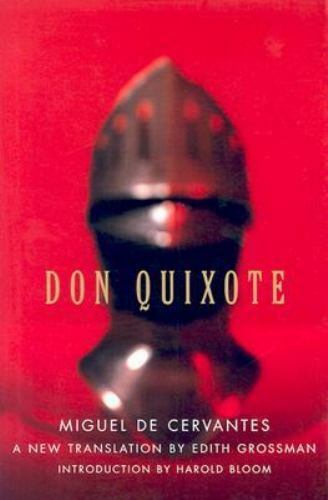
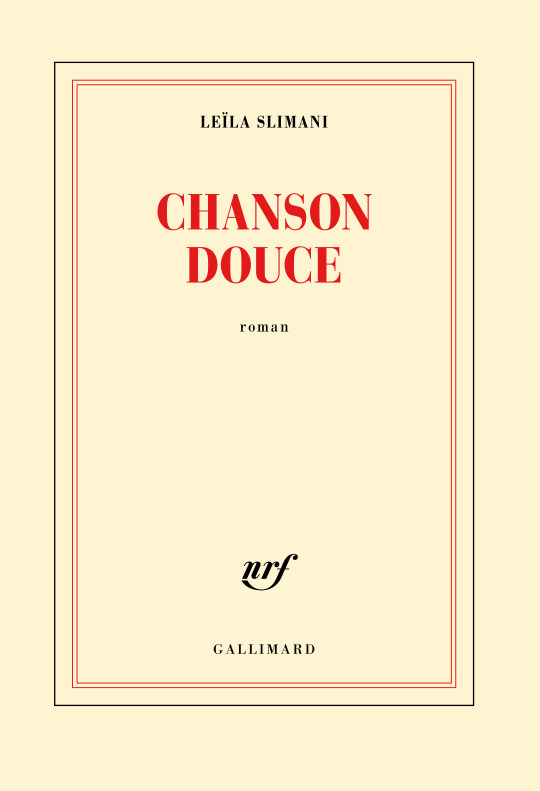
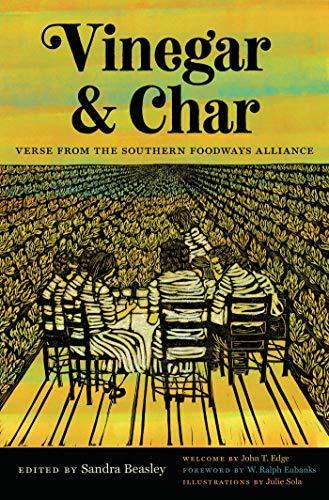


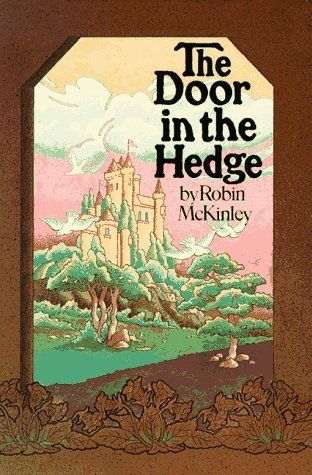

Tales of Effendi (Histoires d'Effendi in French): i know him as Effendi, my father knows him as Djoha, he's "a character in the folklore of the Muslim world from the Balkans to China (Wikipedia)." without his wisdom the days eating bread and mustard would not have passed. what would effendi do -> how to bear a situation with humor. the picture above is the edition that i have. (did you know there's a Chinese stop-motion animation of him?)
Jeeves & Wooster by P.G. Wodehouse: stories of a silly young man and his valet (the brains of the operation). these 2 have been my friends through many dangers (physics mechanic/electric) and without them I would have perished. It was a great comfort having company in the mud -> me 🤝 Bertie Wooster: suffering anna komnene-style stress caused by the thoughtlessness of others/professors
Don Quixote by Miguel de Cervantes: the misadventures of the mad knight Don Quixote and his squire Sancho Panza. The thinker's book. a friend of mine who no longer reads read the whole thing in the original Spanish
Lullaby (Chanson Douce in french) by Leïla Slimani: a gripping psychological thriller relating the events and individual psychology/relationships of the characters that led to the crime that opens the book. I don't think the film did it justice and the book is short so I recommend it. I read it a few times over
Vinegar & Char: Verse from the Southern Foodways Alliance edited by Sandra Beasley: a collection of poems about food by the Southern Foodways Alliance. There were some mornings (6am, January, 1hr commute) where I ate stale bread someone left out overnight with a cup of microwaved water or cold red beans. The height of misery. I'd read a poem with my bread and it would be the apricot jam that turned the thread to a rope
The Bartimaeus Sequence by Jonathan Stroud: I finished reading the 3rd volume last summer while coding a final project (horrific) and studying for a final when I had summer classes (4hrs friday evenings in July -> unbearable) so my head was steam and I didn't think much of it. 1 month later when it processed and I was jumping off walls. at my age 🙄. This book somehow has all the stuff that drives me completely insane (caused by reading all of yugioh age 11 🙄) and it made its way to my "books that Did Something to my Fibers" list which I thought closed years ago. I wonder if Bart has this effect on everyone -> A friend (from above) and I had to drive across 2 states to see someone. My friend is Not Well in a different way than me and decided to start this 9hr drive at 5pm (January. high of 50 degrees.) So we drove all the night stopping only for 3min to get gas at 11 at night. This bozo had the Bartimaeus audiobook going nonstop (it was either that or his 2011 playlist, so). Way back, same thing: 9hr Bartimaeus lockdown. Little bit ago he was talking abt some restaurant and said "I want to take you but it's so far! An hour away!" Reader when I tell you I was baffled. "My man you drove 18 hours across state lines?" "Yes but I had Bartimaeus :) I could've done 12 hours with Bartimaeus :) Me and Bartimaeus would have a wonderful time :)" <- statements of the deranged. Anyway it's good reading if you're built how I am or adjacent to it
The Monster Blood Tattoo Series by D.M. Cornish: a high fantasy children's series about a foundling who makes his way in a world beset by monsters. The world building is Incredibly detailed and Bloodborne flavored to give you an idea. Interesting because of the prominence of chemistry and human modification (off-screen) in the narrative/daily life of the story -> people get organs to control lightning/telepathy. Nobody I talk to will read them because they're big books.
The Door in the Hedge by Robin McKinley: a collection of fairy tale retellings. I like McKinley because she disappears in her fairy tale prose and the atmosphere she builds suits the stories she tells
Garder le Cap by Sempé: a collection of Sempé's comic illustrations, with his characteristic humor and wit
If you make it this far, this is for you ^_^ -> 🍧
8 notes
·
View notes
Text
I signed up to zoom into an academic conference on medieval women, but the time zone difference could not have been worse: London's 9-4 is my 1 am - 8 am. The first day I completely slept through, and the second day I had it up on my laptop ... and still completely slept through lololol. I'm sorry Anna Komnene and Umm Faḍl😭
4 notes
·
View notes
Text
@just-late-roman-republic-things
I think for the women section in Byzantine, you can add Aelia Eudoxia, the wife of Arcadius, Aelia Pulcheria (problematic though, not sure if you want to include her) Aelia Eudocia, the wife of Theodosius II and Galla Placidia.
Anna Komnene who is the author of the Alexiad, a biographical work that accounts Alexios I Komnenos' reign, her father.
Her mother Irene Doukaina.
Empress Theodora, wife of Justinian the Great (I) (for obvious reasons and a famous one, not sure if you include her in your list.)
3 notes
·
View notes
Text
I remade the previous version cos I felt like it didn't have enough details. Another one of my witchy tarot works in honor of Anna Komnene ❤
instagram
3 notes
·
View notes
